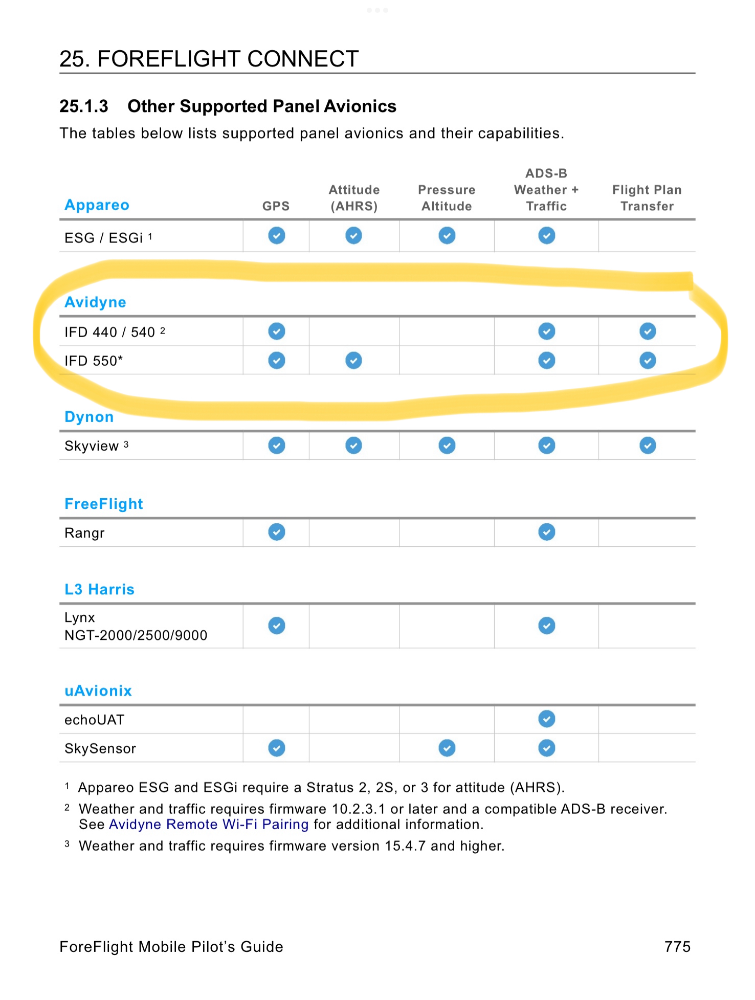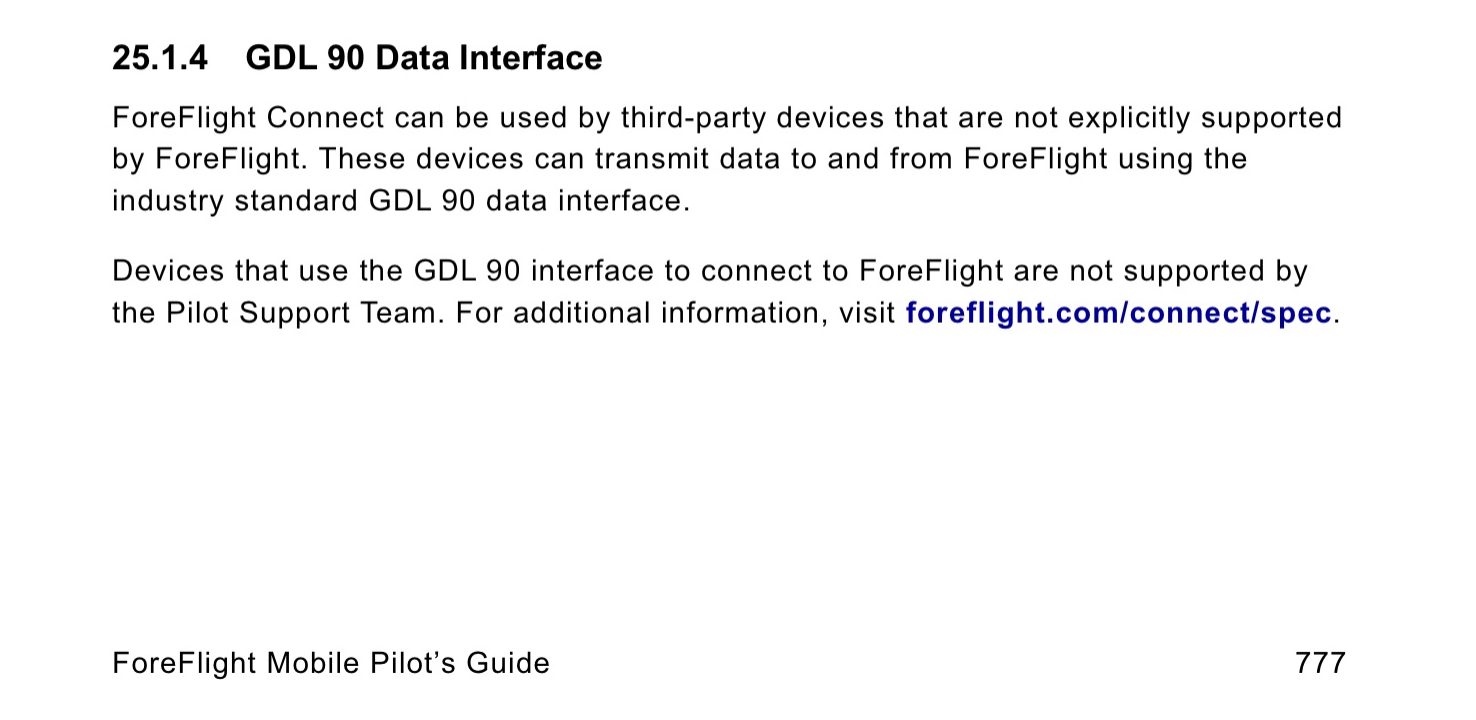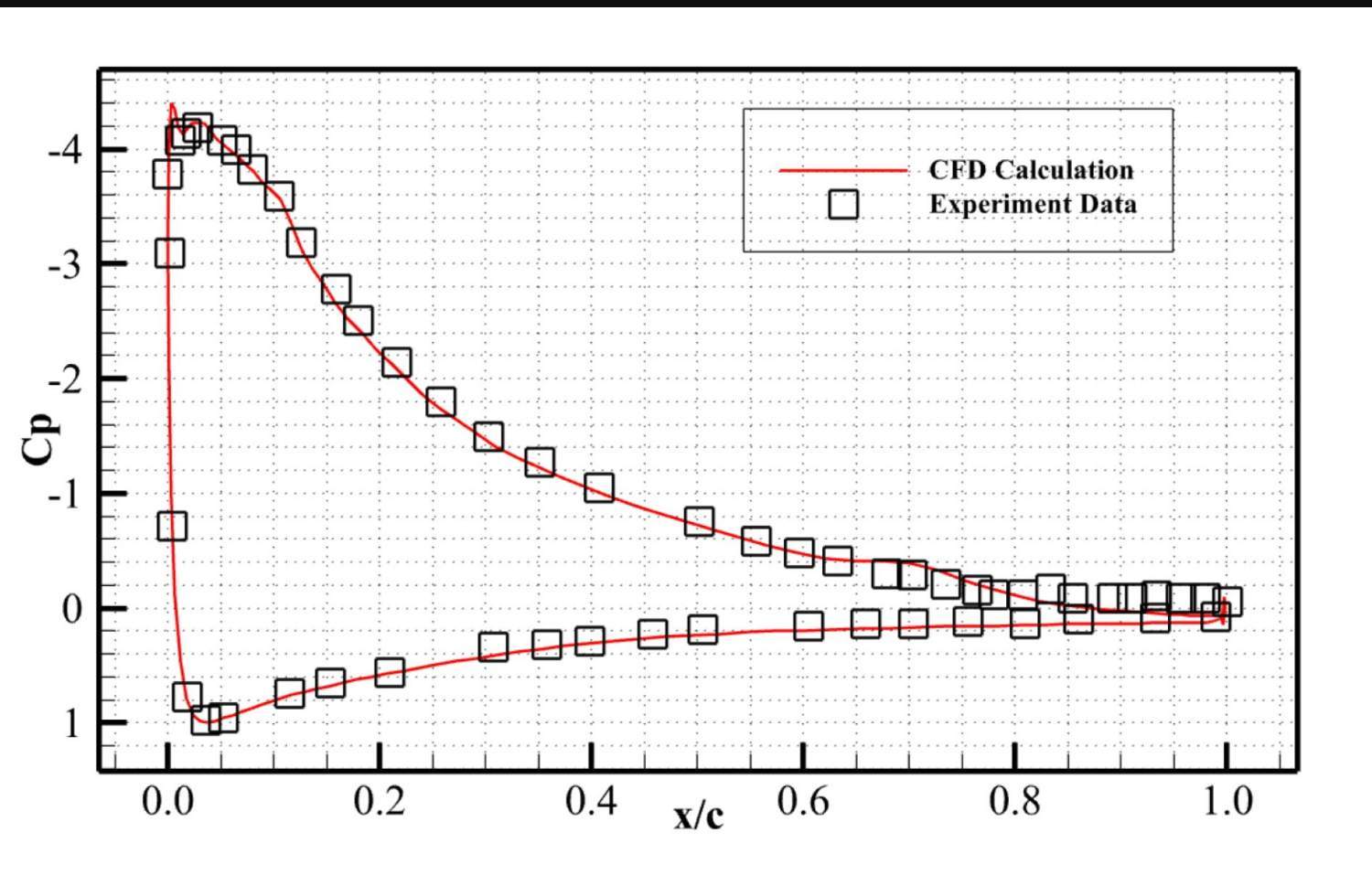-
Posts
9,784 -
Joined
-
Last visited
-
Days Won
217
Content Type
Profiles
Forums
Blogs
Gallery
Downloads
Media Demo
Events
Everything posted by PT20J
-
Dark side of visual approaches.
PT20J replied to Mooneymite's topic in Mooney Safety & Accident Discussion
In my installation, the GTN gets corrected baro altitude from the G3X (or G5 if the G3X is inop). The GTN uses corrected baro altitude for GPS integrity checking, VNAV, automatic sequencing of altitude terminated legs, and Smart Glide. -
Source for door leather strap/handle
PT20J replied to AndreiC's topic in Vintage Mooneys (pre-J models)
On my '78 J, I bought a leather belt the right width and just cut it to length and put holes in it for the bolts. It worked great and was stronger than the original. Check women's belts -- they come in a greater variety of sizes and colors. -
It's a double-pole, double-throw switch. One pole controls the gear lights and the other the motor. So, you still need to test the other pole that controls the motor. You could do this by raising the gear and then holding the down switch closed while someone puts the gear handle in the down position (you'll have to override the squat switch or airspeed safety switch) and then operating the switch to verify that it can start and stop the motor.
-
Dark side of visual approaches.
PT20J replied to Mooneymite's topic in Mooney Safety & Accident Discussion
I shot a LPV approach today with the altimeter set 0.15" higher than the reported altimeter setting causing the airplane to be about 150' MSL lower than indicated. I set the Baro minimums on the G3X to published DA which was 200' AGL. I intercepted the approach course about 3 miles outside the FAF. I intercepted the GP inside the FAF (because I was low) and as I tracked the GP, the descent lined up with the PAPI. The G3X annunciated MINIMUMS at about 50' AGL. So, as I expected, the erroneous altimeter setting had no effect on the GP but only caused the intercept to be at a lower altitude and closer to the MAP. In your original post you mentioned the airplane flying into Key West was an airliner with a FMS. Is it possible that they were shooting a baro LNAV/VNAV approach and the FMS was not using GPS. -
Foreflight Alternatives? Which EFB should I switch to?
PT20J replied to 0TreeLemur's topic in Avionics/Panel Discussion
OK, that makes sense. -
Foreflight Alternatives? Which EFB should I switch to?
PT20J replied to 0TreeLemur's topic in Avionics/Panel Discussion
Well, that was my point. As I understand it, the objective was to display traffic on both the IFD and FF using the Stratus as the ADS-B In receiver. The problem seems to be that FF and the IFD use different protocols to communicate with the Stratus. But, if the Stratus will pass data to the IFD, and the IFD will pass it on to FF, it would seem that you’d get traffic on both devices. It would also be possible to pass flight plans between the IFD and FF. You’d lose the Stratus AHRS though. What am I missing? -
Foreflight Alternatives? Which EFB should I switch to?
PT20J replied to 0TreeLemur's topic in Avionics/Panel Discussion
-
One think to note is that the servo finger screen is supposed to be removed for inspection and cleaning from the side where the fuel line attaches to prevent any crud from falling out of the screen and into the servo. It can be removed from the other side, but that isn't the right way to do it and risks contaminating the servo if there is crud in the filter.
-
I just called my insurance company (USAIG) and they handled it. That’s what insurance is for. No ding on my rates because it wasn’t my fault. I couldn’t get the FBO to deal with it, but the USAIG eventually got reimbursed by the FBO. As of six months ago, LASAR still didn’t have FAA approval for reworking nose gears after new owners moved to Oregon.
-
Foreflight Alternatives? Which EFB should I switch to?
PT20J replied to 0TreeLemur's topic in Avionics/Panel Discussion
ADS-B traffic is really several related broadcast services. ADS-B Out sends your identity and position and velocity to the ground system on either (or possibly both) the 1090ES or UAT frequencies. ADS-B (air-to-air) receives ADS-B transmissions from other aircraft on the same frequency for display on your system. ADS-R detects aircraft in close proximity that are transmitting on different frequencies and retransmits position on both frequencies so that both aircraft “see” each other. TIS-B detects non ADS-B targets from secondary radar and transmits their position to ADS-B equipped aircraft. The advantage of a dual band receiver is that it receives air-to-air transmissions on both frequencies so you don’t miss any traffic when not receiving ADS-R from a ground station and it may show more distant traffic than transmitted by ADS-R when receiving that service. Here is a document that describes all the ADS-B services. MA SBS Description Document SRT-047_V5_DCR-PMO-211_11202020signed18DEC20.pdf -
Check the factory, they had a batch made a few months ago. Not sure exactly the variations between models, but I suspect they are pretty much the same.
-
+1. It seems I get notices regularly that some place I do business with has been hacked. PayPal never has, to my knowledge, and I feel better having my credit card known only to one entity rather than giving it to multiple websites that may or may not have good security.
-
Do You Use Speed Brakes for Anything Unusual?
PT20J replied to MBDiagMan's topic in General Mooney Talk
Let's discuss this in reverse order According to Newton's second law, F=ma, an unbalanced force will produce an acceleration. In non-maneuvering (i.e., unaccelerated) flight, lift = weight and thrust = drag. If the speed brakes significantly reduced lift, the airplane would accelerate downward. But this isn't what we want. We want a nice, constant descent rate at a steeper angle with constant airspeed. What is happening is that the extra drag causes total drag to exceed thrust. We naturally decrease pitch to maintain airspeed and this brings a small portion of the weight vector into alignment with the flight path to make up for the thrust deficit. Stall is caused by excessive angle of attack, but stall speed is a function of both angle of attack and wing area (the lift equation is 1/2pV2CLS, where p = air density, V = TAS, CL = lift coefficient, and S = wing area). If the speed brake significantly affected lift, it would be equivalent to reducing the wing area, and the stall speed -- but not the stall angle of attack -- would necessarily increase. But it doesn't. Clearly the speed brake disrupts airflow around it's location. But it is important to remember that the pressure distribution along the chord of an airfoil is not uniform. Most of the lift comes from the forward section. In fact, it is common for aerodynamicists to consider the lift concentrated along the quarter chord line as predicted by thin airfoil theory before modern CFD methods were available. Here is a diagram of the pressure coefficients on the top and bottom of a laminar flow airfoil at high angle of attack from https://www.mdpi.com/2076-3417/12/17/8757. Note that there is very little lift production aft of the 0.5 chord point. Since the speed brake dimension is small compared to the span, it doesn't affect much of the wing area and as it is located so far aft on the chord line this effect is in an area of little lift production. -
EXACTLY. My point, since ground leaning was brought up, was that all this leaning that people are doing to supposedly prevent spark plug fouling was a technique originally developed for low compression engines to prevent lead fouling, not oil fouling. I'm with Ross. If your idle mixture is set right, you should only need to lean an IO-360 when at a high density altitude airport. But, it doesn't hurt anything.
-
Won’t start after running engine for a few minutes
PT20J replied to Nick81's topic in General Mooney Talk
One thing I have learned is that many electrical problems are caused by wiring issues. And, they are inexpensive to fix! -
The ground leaning idea originated with the demise of 80 octane avgas. Engines that were designed for 80 octane began having spark plug lead fouling problems with 100LL. Leaning the mixture raises the combustion chamber temperature so that the scavenging agent does a better job of getting rid of the lead. The Cessna 152 engine was especially prone to fouling and eventually the BY spark plugs were developed to mitigate the problem by extending the electrodes farther into the combustion chamber where they run hotter. The BY plugs are approved for the IO-360 and I run them. They provide the operational benefits of the fine wires, although not the reduced maintenance, at lower cost. I don't believe that I have ever seen the ground leaning procedure in a POH.
-
Foreflight Alternatives? Which EFB should I switch to?
PT20J replied to 0TreeLemur's topic in Avionics/Panel Discussion
ForeFlight will connect to the IFD for ADS-B In. Can you not just use that interface rather than the Stratus 3? That interface also advertises flight plan transfer. ForeFlight has a particular interface that they test for the Stratus 3 and that's what they guarantee. It sounds like either there is a setup problem or perhaps FF has altered the operation of an unadvertised feature. In my experience running software development, lots of commercial software has unadvertised features; sometimes they are there for testing, sometimes they are future unrelease features still in development, and often they are just design errors. The support team will likely not know about them. Certified products will very seldom have "hidden" features because they generally comply with RTCA DO-178 which puts severe restrictions on such things. From the link @LANCECASPER posted, it kind of seems like not much is guaranteed if you try to use a GDL 90 device. -
"Replaced left and right recognition light bulbs with Whelen 01-0770303-20."
-
Here is the RSA fuel injection troubleshooting guide. RSA Troubleshooting.pdf
-
That would be the proprietary drawing submitted to the FAA by RAM for approval per 21.303. 21.303 Application. (a) The applicant for a PMA must apply in a form and manner prescribed by the FAA, and include the following: (1) The identity of the product on which the article is to be installed. (2) The name and address of the manufacturing facilities at which these articles are to be manufactured. (3) The design of the article, which consists of— (i) Drawings and specifications necessary to show the configuration of the article; and (ii) Information on dimensions, materials, and processes necessary to define the structural strength of the article. (4) Test reports and computations necessary to show that the design of the article meets the airworthiness requirements of this subchapter. The test reports and computations must be applicable to the product on which the article is to be installed, unless the applicant shows that the design of the article is identical to the design of a article that is covered under a type certificate. If the design of the article was obtained by a licensing agreement, the applicant must provide evidence of that agreement. (5) An applicant for a PMA based on test reports and computations must provide a statement certifying that the applicant has complied with the airworthiness requirements of this subchapter. (b) Each applicant for a PMA must make all inspections and tests necessary to determine— (1) Compliance with the applicable airworthiness requirements; (2) That materials conform to the specifications in the design; (3) That the article conforms to its approved design; and (4) That the manufacturing processes, construction, and assembly conform to those specified in the design.
-
From the FAA PMA database: PMA Holder Name: Ram Aircraft Limited Partnership Status: Current CFR Part Reference: PMA Holder Number: PQ0399SW Office of Primary Responsibility: AIR-883: San Antonio MIDO Section Supplement Number: 117 REV. 2 Supplement Date: 10/28/2021 Part Name: V-BANDCOUPLING Approved Replacement for Part Number: CAT Inc P/N 653337 Make: ContinentalAerospace Technologies INC Model: TSIO-520-BE; TSIO-550-B1B | B2B | E1B | E2B | E3B | E4B FAA Approval Basis: Test and Computation per 14 CFR § 21.303, Dwg: 2172, REV H, Dated: 01/20/03, or later FAA approved revisions Sub-Status: CFR Subpart/Appendix Reference: CFR Section Reference: Sec. 21.301
-
Ever notice how thick the Aircraft Spruce catalog is? I don’t see how they could keep up with fluctuating prices on all that stuff. They do have a price match policy. I’ve never bothered because I usually find that Spruce’s prices are better when shipping is included. I know several A&Ps that buy from Spruce.
-
Typo. Thanks for pointing it out. I’ll correct the original post.







